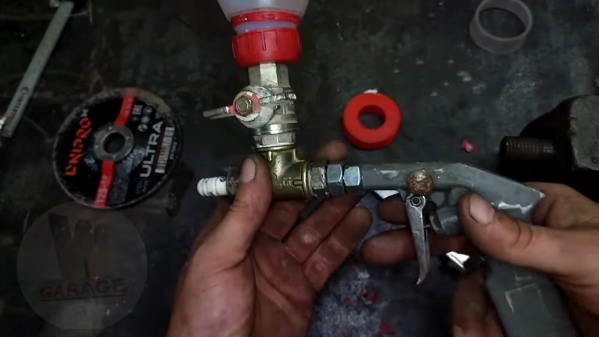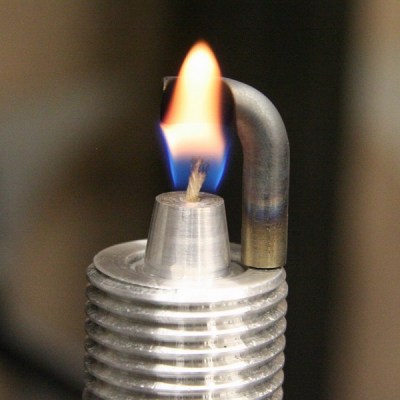Opinions vary as to what actually constitutes a “complete” shop, but one thing is for sure: the more tools, the better. That doesn’t mean running out to buy a tool every time you have a need, of course. Sometimes you can throw together what you need from scrap, as with this ad hoc sandblaster. (Video, embedded below.)
Fans of junk builds — and we mean that with the highest respect — will want to pay special attention to [GARAGEUA]’s video below. It looks like pretty much everything he uses to make this sandblaster comes from the junk pile — bits of old plumbing fixtures, a blow gun that’s seen much better days, some old nuts and bolts, and even a deceased spark plug all make an appearance. That last one is perhaps the most interesting, since with some clever dissection the spark plug’s body and its ceramic insulator were used for the nozzle of the sandblaster. And best of all, no lathe was needed for this job — everything was done with a hand drill and an angle grinder. Check out the build details in the video below; you might pick up some useful tips.
We’ve featured even junkier sandblaster builds before, but this one is a clever way to save a few bucks and flex a bit on your mechanical ingenuity. If you need a sandblaster and it’s something you’re going to use again and again, by all means go out and buy one — we won’t judge. But rolling your own is cool too.
Continue reading “Home Brew Sandblaster Is A Junk Bin Delight”






 The spark plug candle was fashioned out of a single piece of 6061 aluminum. To create the scale model, first the stock metal hit the lathe to create the “insulator” section of the plug. From there, he milled in the hex bolt section, then it hit the lathe again to create the threaded section. The inside was bored out to create space for the wick and oil, and then the electrode was installed just above the flame.
The spark plug candle was fashioned out of a single piece of 6061 aluminum. To create the scale model, first the stock metal hit the lathe to create the “insulator” section of the plug. From there, he milled in the hex bolt section, then it hit the lathe again to create the threaded section. The inside was bored out to create space for the wick and oil, and then the electrode was installed just above the flame.








